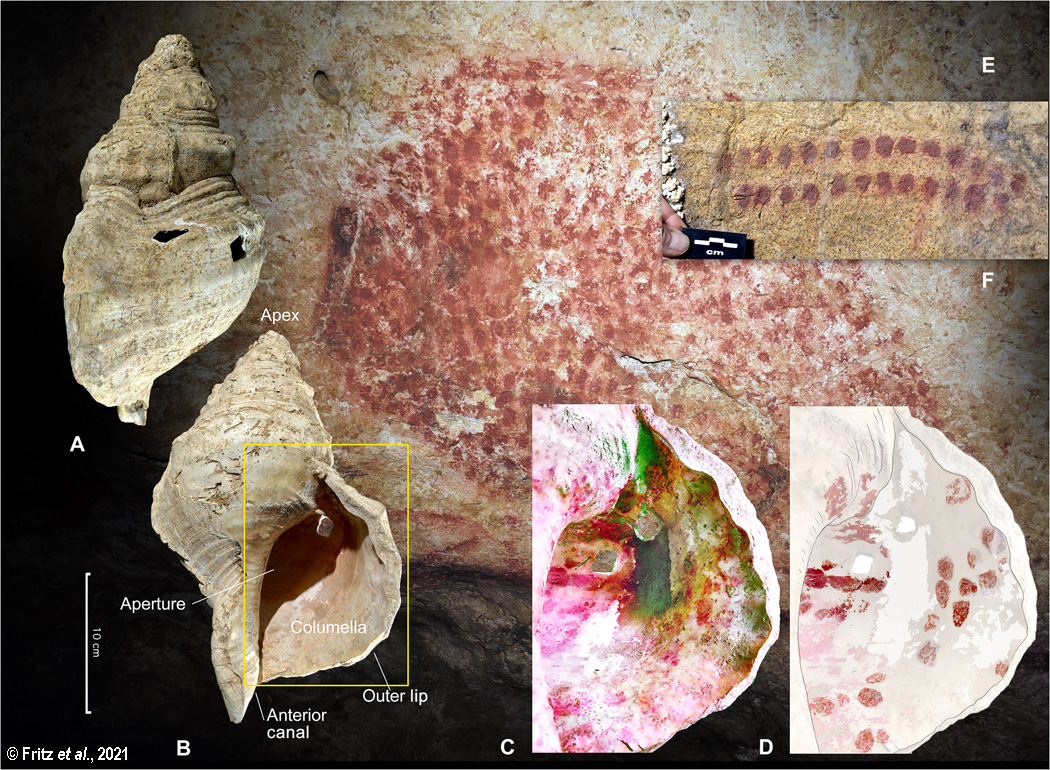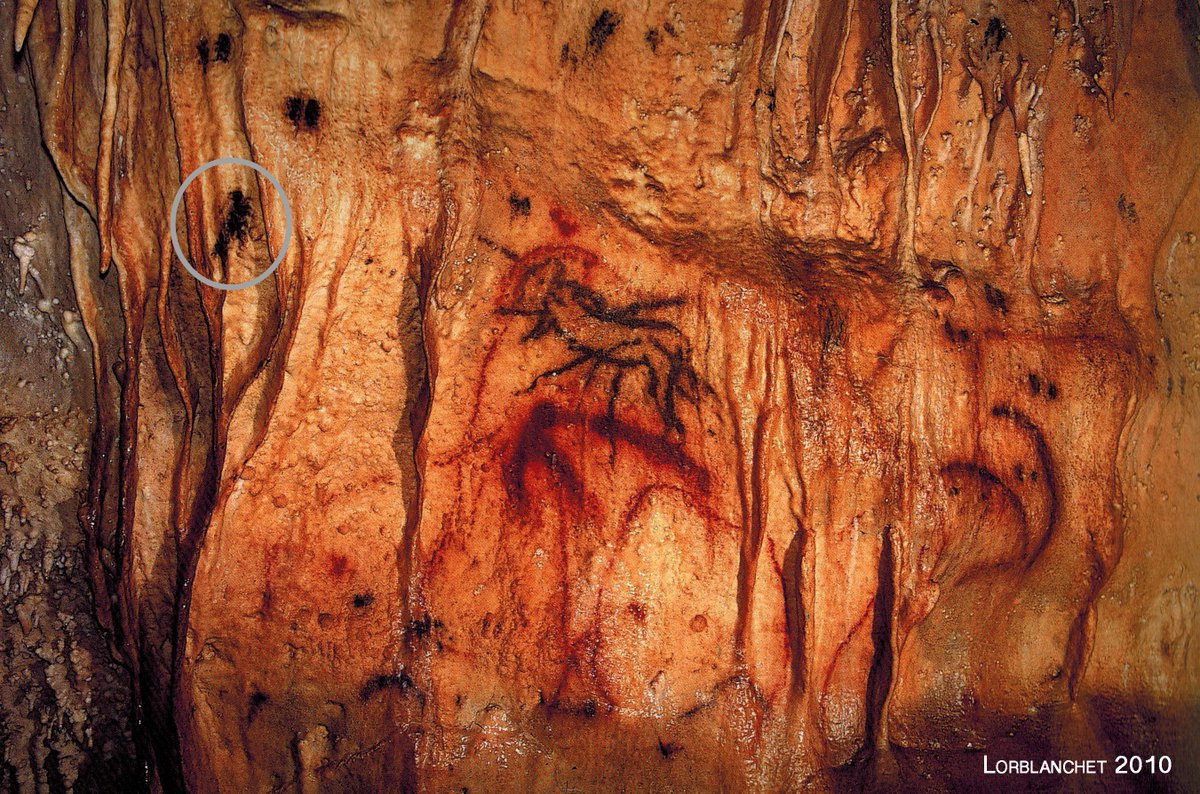
Hi friends! ✨ Today is #FridayPaleoArt and we're moving to French Pyrenees to visit an excellent cave ⛰.
Cave: #Marsoulas
Place: Marsoulas (Haute-Garonne, Francia)
Motif: horse, aurochs, goat, ideomorphs, etc.
Chronology: #Magdalenian

Cave: #Marsoulas
Place: Marsoulas (Haute-Garonne, Francia)
Motif: horse, aurochs, goat, ideomorphs, etc.
Chronology: #Magdalenian


⁉️ The cave is made up of a rectilinear passage with a total development of 70 m, where the wall art only takes up 50 m. It is made up of more than 340 figures, including zoomorphs, ideomorphs and various marks. 



➡️The techniques used by the artists who frequented the cavity were fine engraving and the application of red and black colorants, in some cases taking advantage of the natural relief of the rock to complete the figures. 

📖The most representative figures of the cavern are bison, being the most abundant animal, followed by the horse and the abstract theme where we can observe signs of inverted T, large barbed wires, lines and layers of points, quadrilaterals and tectiforms. 

📚😉👉The authors suggest that the great abundance of graphic manifestations, from the entrance to the bottom, and the dense superposition of them, could be due to a prolonged decorations without stylistic breakages, belonging all of them to the Pyrenean Magdalenian.
Recently, an interesting study of a shell found in 1931 during the excavations of H. Begouën and J.T. Russell has been published, revealing its use as a musical instrument, due to a series of anthropic alterations suffered on its surface👇🏽🔎.
➡️advances.sciencemag.org/content/advanc…
➡️advances.sciencemag.org/content/advanc…

Along with these modifications a decoration composed of reddish punctuations similar in size and shape to fingerprints, and some fine engravings was added. These marks are similar to some parietal motifs such as dotted lines and dotted bison. 

• • •
Missing some Tweet in this thread? You can try to
force a refresh














